Search results
150-Year-Old Family Bible Recovered
December 4, 2012 by ramona
Filed under Articles, Latest News
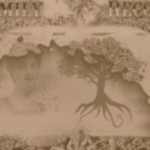 Sometimes the most precious gifts we receive come in the form of a kind gesture from a total stranger.
Sometimes the most precious gifts we receive come in the form of a kind gesture from a total stranger.
Such was the case for a Denver woman who received an email this month from a thoughtful stranger in Arizona…1500 miles away. The email contained information about a 150-year-old family bible, an attachment with pictures of the bible and a query as to whether the bible belonged to the Denver woman’s family. Together with the pictures was a hand written page that the woman immediately recognized as her great grandfathers.
The email also held the information that the bible – purchased by a picker at an estate sale – was slated for an upcoming auction. The decision was made to travel to Arizona and make a bid for the lost family treasure.
With Christmas, fast approaching the spirit of giving must truly be in the air for when the woman and her family reached their destination they received yet another surprise. The auction house closed the sale and gave the bible back to the family.
Contained within the bible was a peacock feather, photographs, lace and locks of hair: along with pages of family deaths, marriages and births.
The woman who sent the email stated that she felt compelled to find the bibles rightful home and it only took her a few days to find the family line that led her to the Denver woman.
Kindness in the Genealogy Community
Something wonderful about the genealogy community is that stories like this one are not unique. To find evidence of this you need look no further than the internet to discover some fantastic websites such as Ancestor’s Lost and Found.
Ancestor’s Lost and Found is a searchable site dedicated to returning lost memorabilia found by others to their rightful descendants.
Its directory pages are filled with:
- Lost treasures: A section where you can post lost family items you are searching for
- Treasures to Share: Found items people are willing to share
- Treasures Found: Items found by individuals who would like to return them to the correct families
- The Mystery Gallery: Family Tree Photos in need of identification
- Family Bibles: a page set aside for Family Bibles containing genealogy information
Ancestor’s Lost and Found is sponsored by USGenNet: a not for profit webhosting service developed specifically to support sites such as this one. USGenNet relies on donations for continued support, if you would like to help out with a tax deductable donation visit here.
Genealogy and Disasters
September 24, 2012 by ramona
Filed under Articles, Family History, Latest News
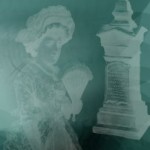 It may very well be the desire to know who we are and where we come from that leads us into family tree research…but it is often the family history stories that keep us going.
It may very well be the desire to know who we are and where we come from that leads us into family tree research…but it is often the family history stories that keep us going.
The clues we find in the written record such as an accidental or unusual cause of death can take us on a journey into the past: a journey that sometimes concludes in the discovery of an ancestor’s tragic end.
Such was the case with Clara Rawson whose 1908 death certificate stated the cause of death as “burnt in fire in Fernie”. A little digging through newspaper archives revealed that in August of 1908 there occurred a forest fire of epic proportions. The 1908 fire that killed Clara blazed hundreds of miles down a valley wiping out several communities and resulted in over 600 deaths.
Gendisasters.com
If you find hints that your ancestors perished from a disaster such as a fire, flue epidemic, earthquake, mine explosion, tornado, train wreck or landslide…not to mention a more famous one such as the sinking of the Titanic: Gendisasters.com is a site you will want to visit ASAP.
Gendisasters is a genealogy site dedicated to recording and publishing information involving histories disasters both natural and man made. The site allows family history hunters to search through their database by:
- Year (1755-2011)
- Location (within Canada and the US)
- Disaster
Finding Ancestors
The depth of the genealogical information included on the site ranges from sparse to quite rich in detail. For example, information on the 1903 landslide in Frank, Alberta, Canada gave the names of 55 victims along with occupation and in some cases family information. Such is the case with WILLIAM WARRINGTON, a miner whose wife and six children also perished in the disaster.
The site also contains newspaper stories of accidental deaths that are a little out of the ordinary such as:
- The tragic death of two young boys in Rosier Mo, who were attacked and eaten by wolves in 1898
- The Powell, WY man who was attacked and killed by a buck sheep (Ram) in 1929
- The boy from Arlington, MN who perished when a tombstone fell on him during a grave decorating party
- The 1920 death of two men who were killed by an elevator that fell 10 stories
If you find an unusual cause of death for one of your ancestors, Gendisaster may be the ideal site for you to flesh out the details of the event. Best of all…this genealogy site is free!
Genealogy Just Got Easier
September 19, 2012 by ramona
Filed under Articles, Genealogy Research Resources, Latest News, Sharing Genealogy Information
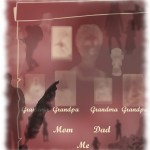 If you have been keeping your eye on MyHeritage.com, you already know that genealogy just got a little easier.
If you have been keeping your eye on MyHeritage.com, you already know that genealogy just got a little easier.
Why?
Because MyHeritage has an amazing new software that can help you find ancestors while you sleep.
The new software called Record Matching is constantly working to compare every individual entered in a family tree on their site to over 4 billion historical records. For users of My Heritage, Record Match will notify you when it has found matching documents such as:
- Birth, Marriage or Death documents
- Census records
- A tombstone photo
- A newspaper article
- Books
All of this information is found automatically using semantic analysis…and…it is in addition to the automatic matching that checks for your ancestors in other user’s family trees.
Family Tree Tools
Possibly the most phenomenal thing about this search software is…not only does it match Robert & Bob it can actually translate languages to find matches. Each match found comes with a confidence score using a star system so you can check out the most likely matches first, which is huge time saver.
Another little tool that family history hunters are going to love is the option to confirm or reject a match. However, one word of caution here, if you do find a match you will have to manually transfer the data y to your family tree and create your source citation to go with it.
The Price of an Ancestor
By now, you are probably wandering how much this is going to cost. Well here is a little good news – bad news. First, the good news; the Record Match feature is free to users with one or more family trees on my heritage. What this means is that you will be automatically notified of matches and given a short transcript or extract of the matching record. The bad news…viewing the full record or document requires a subscription. However, you do have a pay as you go option if you do not want to purchase a full subscription.
Visit MyHeritage Record Matches to find out more about this cool genealogy tool…but before you go, make sure you are ready with some genealogybeginner.com Family Tree Charts and Research tracking forms: available with your 30-day free trial.
Will Genealogy Solve the Mystery of Richard III?
September 17, 2012 by ramona
Filed under Articles, Latest News
This week a te am of archeologists from the University of Leicester discovered what may be the remains of Richard III, the last of the Plantagenet kings.
am of archeologists from the University of Leicester discovered what may be the remains of Richard III, the last of the Plantagenet kings.
Trails of clues gleaned from medieval documents lead them to a car park in Leicester once thought to be the choir area of Grey Friars Church: where the English king was purportedly buried. Here the archeologists unearthed the remains of a man in what appears to be a high status burial.
The team will attempt to positively identify the remains using a combination of documented evidence describing Richard III, genealogy and DNA testing.
Why do they believe this could be Richard III?
The skeletal remains appear to be in line with contemporary descriptions of both Richard’s physical characteristics and accounts of injuries at his death in the Battle of Bosworth Field in 1485.
University of Leicester director of corporate affairs, Richard Taylor stated that the remains show signs of the spinal deformity Scoliosis. This is consistent with a physical description of the king from Sir Thomas More’s “History of King Richard the Third” which reads:
little of stature, ill fetured of limmes, croke backed, his left shoulder much higher then his right,
Additionally, historical accounts of Richard’s injuries at death from manuscripts and chronicles provide at least circumstantial evidence that the body may indeed be that of the king.
Genealogy to the Rescue
Without the help of genealogy and the technology of DNA testing this discovery would likely remain in the realm of speculation for generations to come. However, the Richard III Society claims an ancestor has been identified.
Micheal Isben of London, the apparent 17th great grand nephew of the infamous king has consented to provide a sample of DNA. Ibsen’s relationship to Richard III is through his mother, a descendant of the kings sister Anne. To solve the mystery, geneticists from the Leicester University will attempt to extract a sample of mitochondrial DNA From the skeletal remains and compare them to Isben’s mtDNA.
Of course, this is all dependent upon how reliable the genealogical records are for Isben’s Family Tree.
Pinning your Family Tree
July 14, 2012 by ramona
Filed under Articles, Family History, Latest News, Preserving Your Family Tree
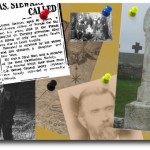 Well it certainly did not take long for family tree fanatics to make use of social media “pinning” sites.
Well it certainly did not take long for family tree fanatics to make use of social media “pinning” sites.
If you are new to social media here is what you need to know about pinning. Pinning is a visual way of sharing your interests via a virtual pin board. You can create boards based on a singular theme such as genealogy, family tree, family history etc. Ultimately, what these sites do is share links through images. One way to think of it is as a visual bookmark.
Pinning for Genealogy
Pintrest
Pintrest can be used as a fantastic tool for organizing your genealogy, sharing resources and following others with like interests. The only catch is that in order to use Pintrest you must first receive an invitation.
Pinspire
If you do not have an invitation to Pintrest, you can try out its identical twin Pinspire. Pinspire is identical to pintrest with one exception…no invitation required.
If you want to check out more pinning sites, Minglewing, Piccsy and Storify are good places to start.
Uencounter.me
The newest kid on the pinning block is Uencounter.me a pinning site with a purpose. Uencounter.me is a mapping site that focuses on letting the user built a visual map of their family tree.
Building a visual map of your ancestors can be a very helpful tool for your family history research. However, the possibilities for information sharing with this type of application are easy to see.
Imagine the map as a resource for finding ancestors by location. Although other search sites come close, if you are not familiar with the geography of the area you are searching… it is easy to become confused and miss something.
For example:
My line of McCallum’s hail from Lanarkshire Scotland can be found in the census at Firth, Carstairs and Carnwath. While that may not mean much on a data screen, having a visual of just how close those communities are, helps give some perspective to your search.
Using Uencounter.me
The process starts by bringing up the map and asking you to zoom into your area of interest. You can also pin a place by adding the address.
Drop down menus let you select:
- Type of Encounter: Genealogy,
- Dates to and from: a date range from the present to the year zero,
- People Here Are / were: ancestors
- This pin relates to: an ancestor
- Specifically: Birth, Marriage, Death, other
For those of you who want to pin live relatives do not worry as the site gives the option for a privacy setting on an individual basis. As you move forward to the next step you will get a pop up box that allows for notes, you can even add photos.
While Uencounter.me shows all the earmarks of a superior genealogy tool, a searchable name function would make this an invaluable free resource for genealogists everywhere.
Need to learn more about finding your ancestors through the geography of genealogy check out Genealogy Beginners lesson on Searching by Place. Available with your 30-day free trial membership.
Genealogy: Online Ethics and Etiquette
July 11, 2012 by ramona
Filed under Articles, Genealogy Standards & Guidelines, Introduction to Genealogy, Latest News
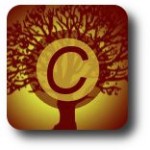 From the novice to the veteran family historian we can all agree that the vast amount of information available online for genealogy research is a great blessing. Therefore, it is more important than ever to become familiar with the ethical practices and etiquette involved in information sharing when it comes to our family trees.
From the novice to the veteran family historian we can all agree that the vast amount of information available online for genealogy research is a great blessing. Therefore, it is more important than ever to become familiar with the ethical practices and etiquette involved in information sharing when it comes to our family trees.
On sites such as Ancestry.com and Find a Grave, a great deal of the information is made available through the contributions of fellow researchers. Thus, it is becoming easier for genealogy beginners to discover documents and photos at the touch of a few keys.
Family Tree Ethics and Etiquette
Published genealogies can be a truly wonderful resource, they aid us in our own research and quite often lead to the discovery of cousins we never knew we had. The down side of this is that through innocent error and sometimes intent, the genealogical community experiences a degree of unethical behavior and bad manners.
It is very exciting to find published information about your ancestors online however, before you snag that birth, marriage, death record or photo of G.G. Grandma:
1. Ask Permission
This is a common scenario on sites like Ancestry.com where photos and records are often public. This is because Ancestry.com is meant to be a collaborative site and although it states in their Community Guidelines that “Any information you post in our community is public and can be copied, modified and distributed by others” you should still ask permission of the original poster.
2. Give Credit
When using published documents or photos always thank the original contributor A little blurb that reads – Photo Courtesy of Ms. Nice Genealogist – is just good manners.
To learn more about this subject check out Genealogy Beginner’s lesson # 1. Genealogy Standards and Guidelines: You Need to Know This First, available with your 30-day free trial membership.
Donating Genealogical Records
June 28, 2012 by ramona
Filed under Articles, Latest News, Preserving Your Family Tree
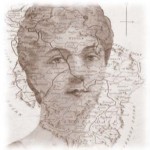 Have no doubt that your family tree research has value beyond the current generations of your own family.
Have no doubt that your family tree research has value beyond the current generations of your own family.
Donating your family history to a local historical or genealogy group is an excellent way to make certain all of your hard work is put to good use. Local Historical Societies and Genealogy groups have a stake in preserving your records for future generations.
How to Donate Your Family Tree
If you are considering donating your family tree research the best place to start is by contacting your local library. Your local library can help you identify the archives that are best geographically suited to receive your family’s story.
Generally, community groups are interested in local reference records. However, they may have ties to other groups with broader interests such as provincial or state archives.
When donating a rather widespread family tree it may be worth considering breaking it into smaller portions focusing on specific locations.
While it is normal in a large family tree to have a significant geographical spread with ancestors coming from all corners of the globe, a local group may have limited space. Therefore, it is reasonable that they may not want to house large documents unless they are completely location specific.
What to Include with Your Donation
Along with your family tree templates or pedigree charts, you should include either originals or copies of:
- Primary and secondary source documents
- Old photos
- Vital Records
- Newspaper clippings
- Maps
Donating your family tree data is one of the best ways of sharing your genealogy and contributing to the preservation of history in your community. Not only does it help preserve your research for future generations it may be key to helping another family history researcher to break down a brick wall.
However, before you donate be sure not to part with any original items you or other members of your family may want to keep. Lastly, make certain that all of your research conforms to The Big Five Genealogy Standards and Guidelines.
To learn more about genealogical standards sign up today for Genealogy Beginner’s 30-day free trial and receive Eight, Step-by-Step Weekly Lessons You Can Do At Your Own Pace. Starting with Lesson 1: Genealogy Standards And Guidelines.
Genealogy: Getting to Know Your Ancestors
June 14, 2012 by ramona
Filed under Archives, Family History, Genealogy groups, societies and organizations, Latest News
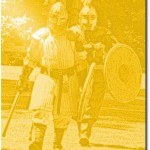 The Merriam Webster Dictionary gives a definition of genealogy as:
The Merriam Webster Dictionary gives a definition of genealogy as:
- an account of the descent of a person, family, or group from an ancestor or from older forms
- the study of family pedigrees
Strictly speaking, this is true; it is certainly a good definition of the process and an accurate descriptor of the intent with which genealogy is first approached. However, to those of us who have spent any length of time on this addictive hobby, the study of our ancestors begins to take on new meaning.
It is not long after family tree research begins that the dry definitions become inadequate. As we work our way through record after record, learning piecemeal the details of our ancestors lives we begin to feel we are getting to know them as individuals.
For some, the genealogical aspects of family history research are not enough. We want to get to know our forefathers on a deeper level. Become more familiar with their day-to-day lives.
If you count yourself among those wishing for a deeper understanding of your generations past, there are a number of activities you can participate in; activities that will allow you to experience your family history in a very real way.
Recreationists
Pick almost any period in history and you will find a group of people actively recreating the era. Living history groups include the activities, dress and tools of the eras they portray to give participants the sense of stepping back through time. Recreationists are not re-enactors; they are not scripted nor are they involved in recreating specific events. Member’s interests can include clothing styles, pastimes, cookery and artisanship, everything that would help create a feeling of every day life in bygone days. It is not at all surprising that among their ranks you find many genealogists and family historians.
Living History Groups
From late 20th century groups like “The 20th Century Revisited” A UK based group recreating scenes and events from various parts of the later 20th Century including WW2 resistance, and 1970 British Army of the Rhine (BAOR) or “Paper Dolls” An international group made up of female members who portray military and civilian life during World War Two. From hometown sweethearts, Women’s Land Army, French Resistance, American Red Cross, Women’s Army Corps. These groups offer an opportunity to learn what it was like for ancestors who lived during the great wars; both on and off the battlefield.
If you are more interested in the events of the 19th century The Living History Society of Minnesota members can attend workshops and participate in activities designed to increase their knowledge of mid 19th century life. For those whose Gr,Gr,Gr, Grandfathers heeded the familiar call of “Go West young Man” the Mojave Muleskinners have several branches across the US, Canada and the UK where you can immerse yourself and learn about life in the old west.
If you can trace your family tree to medieval times, a living history group from the Middle Ages may be more suiting. The Society for Creative Anachronism (SCA) is an international organization with over 30,000 members residing in countries around the world. One of the best things about this group is that you will find a mix of cultures from Viking to Italian to Middle Eastern. Members attend events such as tournaments, royal courts, feasts, dancing, various classes, workshops and more. The SCA is a group that lets you explore all of the European lines in your family tree.
If you want to know more about how living history groups can help enrich your genealogy and family history or how to find a group near you, just post a question to the Genealogy in General board on the Genealogy Beginner forums.
Family Tree: Understanding Cousin Relationships
June 4, 2012 by ramona
Filed under Articles, Genealogy Reports and Charts, Introduction to Genealogy, Latest News
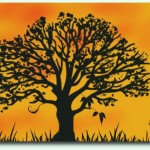 Relationship charts are a great tool for understanding your family tree…when you know how to use them. However, for the genealogy beginner they can be a little confusing.
Relationship charts are a great tool for understanding your family tree…when you know how to use them. However, for the genealogy beginner they can be a little confusing.
The purpose of a relationship chart is to help you identify the first common ancestor shared between you and a non-immediate family member such as a cousin.
For example, by looking at the first two rows of a family relationship chart you can see that the first common ancestor you share with a sibling is a parent, you share a grand parent with a niece or nephew and a great-grandparent with a great-niece or nephew.

This all seems straightforward until you start going down the chart and run into “cousins removed”. So what is a cousin “removed”? The easiest way to understand this is to think of it in terms of how many generations there are between first and second cousins and then go one-step further.
A first cousin is the child of an uncle or aunt and the first common ancestor you share is a grand parent.
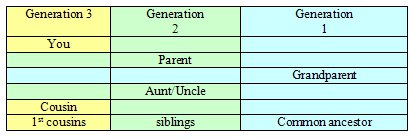
Second cousins are separated by another generation. Simply put second cousins are the children of first cousins. Both children are separated by two generations from their common ancestor.

To understand cousins once removed lets go that extra step. Your cousin once removed is a cousin of your parent.
- The common ancestor of you and your first cousin once removed are your great-grandparents
- There are two generations separating you from your great-grandparents (your parents and your grandparents)
- There is one generation separating your first cousin once removed from your great-grandparents (your great-uncle/aunt).
Since your parents cousin (your first cousin once removed) is one generation closer to your common ancestor there is one generation or “degree” of difference between the relationships you and the “cousin” share with the common ancestor.

One rule to help remember “removed” relationships are that there is always an unequal distance (grey squares) between the “removed” cousins and the common ancestor, while cousins that are not removed will have an equal distance (pink squares) between the common ancestor.
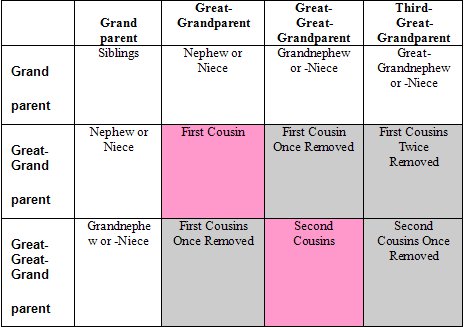
Did you know that in over ten generations you could have well over two thousand direct line ancestors?
Two parents + four grandparents + eight great-grandparents + sixteen great-great-grandparents + thirty two great-great-great-grandparents + sixty four great-great-great-great-grandparents + one hundred twenty eight great-great-great-great-great-grandparents + two hundred fifty six great-great-great-great-great-great-grandparents + five hundred twelve great-great-great-great-great-great-great-grandparents + 1,024 great-great-great-great-great-great-great-great-grandparents (2+4+6+8+16+32+64+128+512+1024) = 2046 direct ancestors in ten generations.
Sign up today for a Free Trial membership with Genealogy Beginner and you will receive a Family Relationship Chart as part of your Family Tree Starter Kit.
Family Heirlooms: 19th Century Photographs
May 13, 2012 by ramona
Filed under Articles, Family History, Latest News, Preserving Your Family Tree
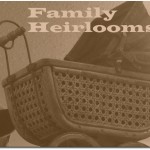 Often making a journey across time and continents, family heirlooms are a solid physical connection to a very personal ancestral past that tend to hold memories, which resonate deep within us.
Often making a journey across time and continents, family heirlooms are a solid physical connection to a very personal ancestral past that tend to hold memories, which resonate deep within us.
Those who have held their great-grandmothers wedding dress or read the letters written home from a relative who served in a war understands the deep link felt across the generations. One truth shared by all family treasures is that… it is the stories that accompany them that give them the greatest meaning and tie us to our generations past.
Sadly, sometimes the objects remain while the stories are lost. Genealogically this can be a great opportunity to discover a new family history story or ancestor. If you have, an heirloom that has become a bit of a mystery an investigation may be in order. The type of investigation you conduct will likely depend on the object you are investigating. While family heirlooms are made up of every object imaginable, from jewelry to family bibles. Often the photographs pose the most problems…particularly very early ones.
19th Century Photographs
The first step in solving the puzzle of a mysterious early period photograph is deciding what type of photo you have. A difficult task with these three photo types of the 19th century.
Daguerreotype:
A good way to decide if it is a Daguerreotype is to hold a piece of paper over the surface and see if the image is reflected in reverse. Additionally, Daguerreotypes are often tarnished around the edges of the picture. If it is a Daguerreotype is will date from 1839-1860.
Ambrotype:
Ambrotypes are often hand tinted. To figure out if what you have is an Ambrotype carefully remove it from the case and hold it up to the light. Ambrotypes were printed on glass so you should be able to see through it. Another clue is to look for any cracks or peeling as another hallmark of the Ambrotype is the black paint used to process the picture. Ambrotypes date from 1854-1865.
Tintype:
It can be hard to tell the difference between a Tintype and an Ambrotype. The only way to be certain is to hold a magnet near it. Tintypes were made of a very thin iron and should be attracted to the magnet. Tintypes were common during the civil war and date from 1856-1920.After you have determined the type of photograph, you may need to track down its geography. A hint you may find helpful, is through the clothing worn by the people in your photograph. Clothing, accessories and hairstyles may be great hints for women, while uniforms can be a dead give away for men. All can help you to zero in on the country or origin. Once that is determined, the next step is to search for period photographers from that country. Several indexes by country list photographers so you should not have too much trouble once you know the photo type.
Additionally, some early photographers may have developed an identifiable style that can be helpful in tracking them down. For example, there may be preferences in the manner which subjects are posed (seated or standing), or backgrounds and props used may offer some clues. This process can be very time consuming, as it is a matter of searching and comparing your photo to the ones found in your search. Even at that, be cautious about your conclusions.
Solving the mystery of your family heirloom can be fun and rewarding. Better yet, it may help flesh out your family history, add new branches to your family tree and fill out another space on your family template. All good reasons to start your detective work A.S.A.P.
If you have a mystery, post it in the Ask A Genealogist forum, or share with us how you solved a mystery on the Discovery Panel and tell us how you did it. Genealogy Beginner would love to hear about your family treasures and heirloom stories.
